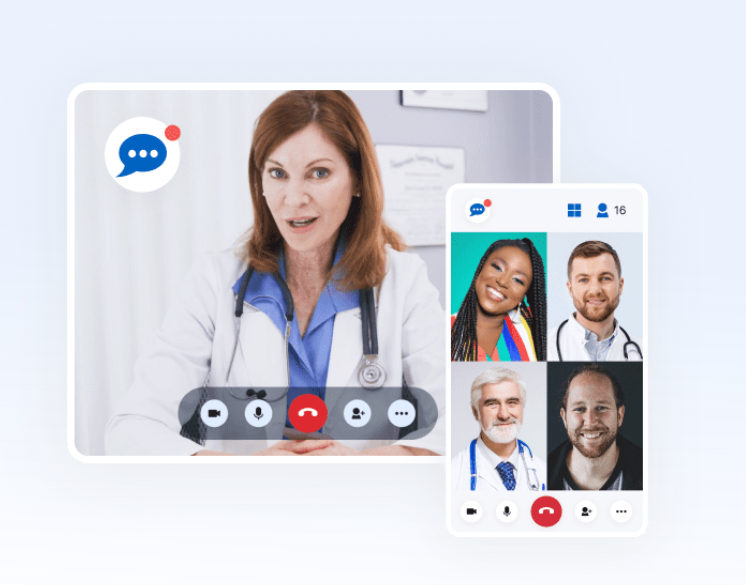In the ever-evolving world of healthcare, telehealth has become a revolutionary approach to delivering medical services. As technology continues to advance, custom telehealth software development offers healthcare organizations the ability to create tailored solutions that meet their specific needs. From enhancing patient care to optimizing workflow efficiency, custom telehealth platforms are transforming the way healthcare is delivered.
This article will explore the key aspects of custom telehealth software development, including its benefits, challenges, essential features, and future trends, as well as provide insights into how to build successful custom telehealth solutions.
What is Custom Telehealth Software Development?
Telehealth refers to the use of digital communication technologies to deliver healthcare services remotely. It includes video consultations, remote monitoring, appointment scheduling, and more. Custom telehealth software development, specifically, refers to the creation of bespoke software solutions designed to meet the unique requirements of healthcare providers, clinics, hospitals, or specialized care providers.
Unlike off-the-shelf telehealth solutions, custom software is tailored to the specific workflows, compliance needs, and goals of an organization, allowing for greater flexibility, scalability, and integration with other healthcare systems.
Benefits of Custom Telehealth Software Development
1. Personalized Patient Care
Custom telehealth software allows healthcare providers to deliver more personalized care by building systems that address specific medical needs. For instance, a platform for a mental health clinic can include tools for virtual therapy, while a solution for a cardiology practice might focus on real-time remote monitoring of heart rate and other vital signs. Personalized features like these lead to more accurate diagnoses, improved treatment adherence, and higher patient satisfaction.
2. Seamless Integration with Existing Systems
Many healthcare providers already use systems like Electronic Health Records (EHR) or Practice Management Software (PMS). Custom telehealth solutions can be designed to integrate seamlessly with these existing systems, ensuring that all patient data is accessible and synchronized across platforms. This integration improves efficiency, reduces manual data entry, and minimizes the risk of errors, leading to better coordinated care.
3. Enhanced Workflow Efficiency
Custom telehealth platforms can automate many administrative tasks, including scheduling, billing, and documentation. This allows healthcare professionals to spend more time on patient care instead of paperwork. Additionally, with features like automated reminders and streamlined appointment booking, custom software can significantly reduce no-show rates and optimize resource utilization.
4. Improved Patient Engagement
With the rise of mobile health applications, patients expect more convenient ways to manage their healthcare. Custom telehealth software can provide user-friendly interfaces, making it easier for patients to interact with healthcare providers, access medical records, and track their health data. These features enhance patient engagement and can lead to better health outcomes by encouraging active participation in their own care.
5. Scalability and Flexibility
As healthcare organizations grow, their needs evolve. Custom telehealth software is designed with scalability in mind, allowing new features, services, and users to be added without significant disruptions. This flexibility ensures that the software can grow alongside the healthcare provider, adapting to new technologies, regulations, and patient demands over time.
Challenges in Custom Telehealth Software Development
1. Regulatory Compliance
One of the biggest challenges in developing custom telehealth software is ensuring compliance with healthcare regulations. In the United States, for example, telehealth solutions must comply with the Health Insurance Portability and Accountability Act (HIPAA), which governs the privacy and security of patient information. Other regions have their own regulations, such as the General Data Protection Regulation (GDPR) in Europe. Developers must ensure that data is encrypted, securely stored, and transmitted according to these regulations.
2. High Development Costs
Developing custom software can be expensive, especially for small to medium-sized healthcare providers. Costs depend on factors such as the complexity of the software, the number of features required, integration with existing systems, and ongoing maintenance and support. While the initial investment in custom telehealth software can be high, it often pays off in the long run through increased efficiency, better patient outcomes, and the ability to adapt to changing needs.
3. User Adoption and Training
Introducing new software can be met with resistance, especially if healthcare staff are used to traditional methods of care. Ensuring that healthcare providers, administrative staff, and patients are properly trained to use the telehealth platform is crucial for its success. Intuitive design and user-friendly interfaces can help ease the adoption process, but ongoing training and support are often necessary to ensure full utilization of the system.
4. Technical Challenges and Security Concerns
Developing a secure, reliable, and scalable telehealth solution requires significant technical expertise. Ensuring that the software performs well under various conditions, including high traffic during peak hours or emergencies, is essential. Additionally, telehealth platforms are attractive targets for cybercriminals due to the sensitive nature of the data they handle. Robust security features like encryption, two-factor authentication, and regular security audits are necessary to protect patient information from breaches.
Key Features of Custom Telehealth Software
1. Video Consultation
At the heart of any telehealth solution is the ability to conduct secure video consultations between healthcare providers and patients. Custom telehealth platforms should include features like high-quality video streaming, the ability to share medical records and images during the consultation, and easy scheduling for both patients and providers.
2. Remote Patient Monitoring
Custom telehealth software can integrate with wearable devices and remote monitoring tools to track vital signs such as blood pressure, glucose levels, and heart rate. Healthcare providers can use this data to monitor chronic conditions and intervene when necessary, leading to better long-term health outcomes.
3. Patient Portals
A patient portal is an essential feature that allows patients to access their medical history, lab results, and treatment plans. It also provides a secure platform for communication between patients and healthcare providers. This enhances transparency and empowers patients to take a more active role in managing their health.
4. Appointment Scheduling and Billing
Automated scheduling features help reduce administrative burden and improve workflow efficiency. Patients should be able to book appointments, receive reminders, and reschedule through the telehealth platform. Integration with billing systems ensures that payments are processed smoothly and can also include insurance verification and claims processing.
5. Electronic Health Record (EHR) Integration
Seamless integration with EHR systems allows healthcare providers to access patient records in real-time, update treatment plans, and document consultations directly in the EHR. This reduces the risk of errors and ensures that all relevant information is stored in a centralized location.
6. Data Security and HIPAA Compliance
Ensuring that the telehealth software complies with relevant regulations, like HIPAA, is essential. Features such as data encryption, user authentication, and secure data storage must be implemented to protect patient information. Regular security updates and audits are also critical to safeguarding the platform against potential threats.
Best Practices for Developing Custom Telehealth Software
1. Understand the Needs of Stakeholders
Before starting the development process, it's essential to gather input from all stakeholders, including healthcare providers, administrative staff, and patients. This will help identify the specific needs and challenges the software must address. A thorough needs assessment ensures that the software is designed with the end-users in mind, resulting in a more effective and user-friendly platform.
2. Prioritize User Experience (UX) Design
A well-designed user interface is critical to the success of telehealth software. Providers and patients should be able to navigate the platform with ease. Simple, intuitive design can help minimize the learning curve and encourage adoption by both staff and patients. Regular usability testing during the development process can help identify potential issues and refine the user experience.
3. Ensure Robust Security Measures
Security is paramount in healthcare software development. From encryption to multi-factor authentication, every effort must be made to protect patient data. Adopting industry best practices, such as conducting regular security audits and penetration testing, can help identify vulnerabilities and ensure the platform remains secure over time.
4. Plan for Scalability and Future Growth
As healthcare needs evolve, telehealth platforms should be able to scale to accommodate new features, increased user loads, and additional services. Developing the software with a scalable architecture ensures that the system can grow alongside the healthcare organization, without needing frequent major overhauls.
5. Offer Ongoing Support and Training
Even the most well-designed telehealth software requires ongoing support and training. Healthcare providers must be equipped with the knowledge and resources to use the platform effectively. Offering training programs, user manuals, and responsive technical support can help ensure that the software is fully utilized and continues to provide value over time.
The Future of Custom Telehealth Software Development
1. Artificial Intelligence (AI) and Machine Learning (ML)
AI and ML are poised to play a significant role in the future of telehealth. These technologies can be used to analyze patient data, predict health outcomes, and assist in decision-making. For example, AI-powered chatbots can provide initial assessments and route patients to the appropriate healthcare provider, while ML algorithms can analyze remote monitoring data to detect early signs of deterioration in chronic conditions.
2. Wearable Technology and Remote Monitoring
The integration of wearable devices into telehealth platforms is set to expand, offering continuous monitoring of patients' health in real-time. These devices, such as smartwatches and glucose monitors, can provide healthcare providers with critical data on patients' conditions, allowing for more proactive and personalized care.
3. Virtual Reality (VR) and Augmented Reality (AR)
VR and AR technologies are making inroads into telehealth, particularly in areas like mental health treatment and remote surgery. For example, VR can be used in cognitive behavioral therapy for anxiety or PTSD, while AR can assist surgeons during remote procedures by overlaying digital images onto real-world views.

